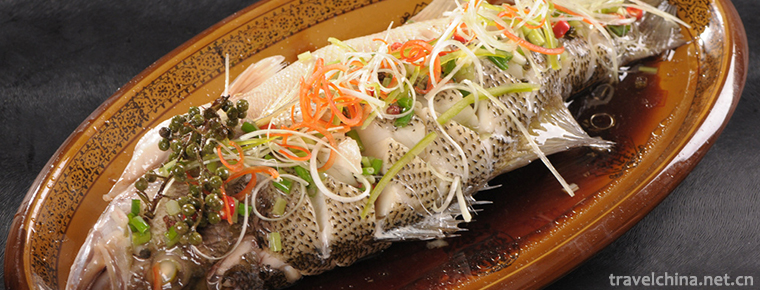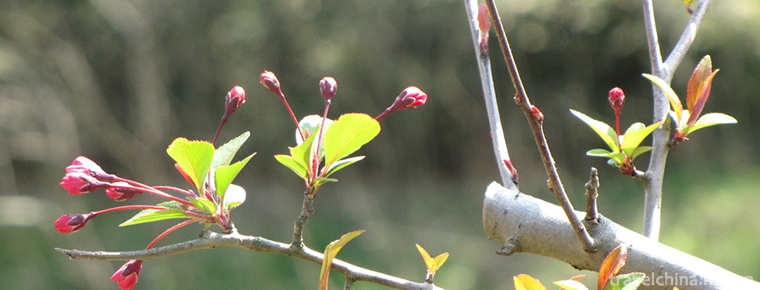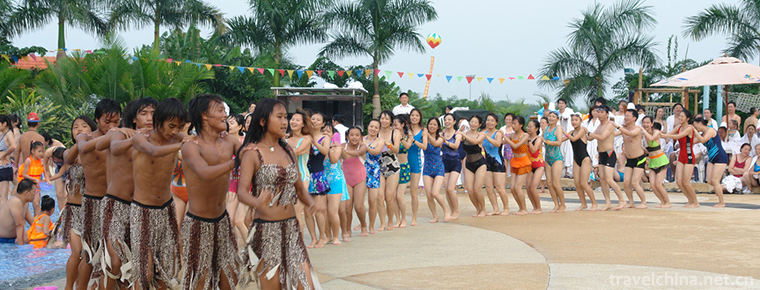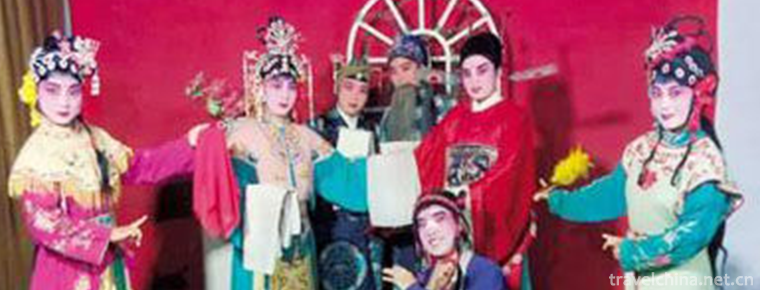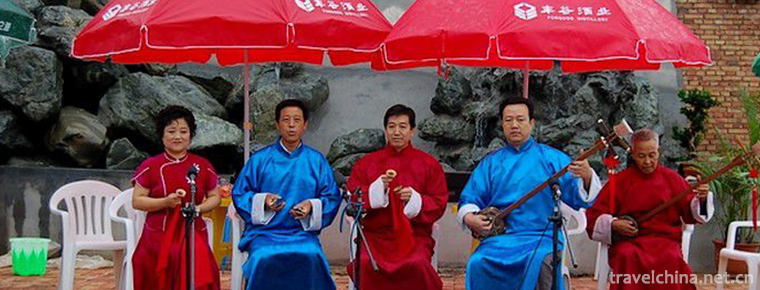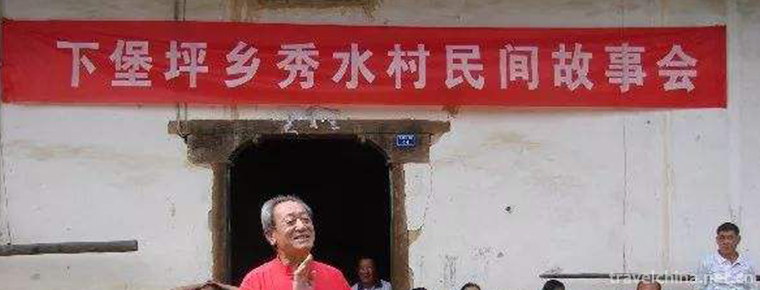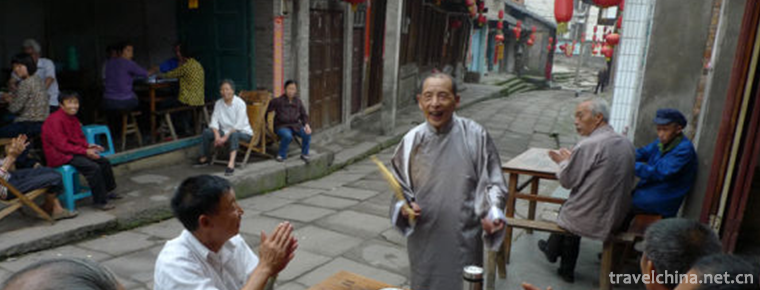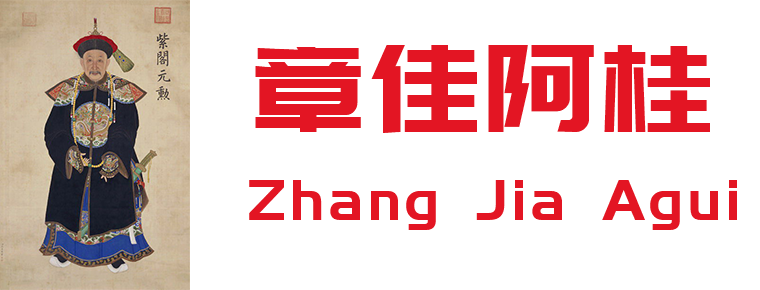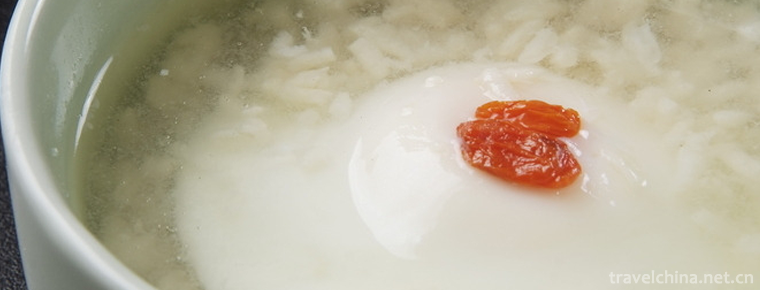The Mausoleum of the Yellow Emperor
The Mausoleum of the Yellow Emperor
The Mausoleum of the Yellow Emperor is one of the national intangible cultural heritages, which has formed a certain scale format and sacrificial ceremonies in the long-term practice.
Mausoleum sacrifices of the Yellow Emperor can be roughly divided into official (official) sacrifices and people's sacrifices. Emperor Xuanyuan pioneered history and created Chinese culture, and was regarded as the ancestor of the Chinese nation. In order to commemorate and remember the spirit of ancestors, ancestors have a grand sacrificial activities. The main places to hold the Huangdi Mausoleum Ceremony are Huangling County in Shaanxi Province and the hometown of Huangdi in Xinzheng, Henan Province.
After the founding of the People's Republic of China, especially since the reform and opening up, the sacrifice of the Mausoleum of the Yellow Emperor has attracted more and more attention from the Chinese children at home and abroad, and the scale of sacrifice has become more and more grand. The sacrifice of the Yellow Emperor has become an important activity for inheriting Chinese civilization, gathering the Chinese children, conspiring for the reunification of the motherland and creating a better life.
On May 20, 2006, the ceremonies of Huangdi Mausoleum declared by Huangling County of Shaanxi Province were approved by the State Council to be included in the first batch of national intangible cultural heritage list (category: folklore; number: _-32).
historical origin
The legend of Xuanyuan Emperor, the ancestor of the Chinese nation, tells us that in the barbaric age 5000 years ago, the war ended by surrendering Yan Emperor and slaughtering Chiyou, and human civilization began from then on. Therefore, after the death of the Yellow Emperor, people at that time set up temples and altars to worship the Yellow Emperor with various exquisite objects.
The sacrificial activities of Huangdi Mausoleum are divided into two parts: public sacrifice and folk sacrifice. Public sacrifice to Huangdi Mausoleum is a large-scale sacrificial activity with strict scale, rank and ceremony organized in the official name. According to the Record of Deduction History, "When the Yellow Emperor collapsed, his minister Zuo Che took several sticks of clothing and sacrificed them to the temple." The sacrifice of the Yellow Emperor began from then on. Later, from the scattered records of Guoyu, Li Ji and Rite Sacrifice, we can see that from the Yao, Shun, Yu times to the Spring and Autumn Period, the activities of public sacrifice to the Yellow Emperor never stopped.
The earliest recorded public offerings originated in the Spring and Autumn Period. According to the Records of History, King Zhou Weilie four years ago (422 years ago), "Qin Ling Gong worked as Wuyang Shangchou, worshipped Huangdi, made Xiachou, worshipped Yandi." After the founding of the Western Han Dynasty, Liu Bang, the great ancestor of the Han Dynasty, took the Yellow Emperor as an example in political governance, so he naturally attached great importance to the sacrifice of the Yellow Emperor. After Emperor Liu Che of the Han Dynasty came to power, "Zhenbingze Brigade first, and then Fengchan." In the winter of the first year of Yuanfeng (110 years ago), Emperor Wudi visited the border and once "ancestral temple Huangdi in Qiaoshan". He also led 180,000 troops to worship ancestors and built the Hanwu Sendai for people to climb and cherish the ancient times. This is the largest official ancestral worship activity in history. Liu Xiu, the founding Huangdi of the Eastern Han Dynasty, was in the second year of Jianwu (AD 26). He was the Eight Majesty of the Round Tan and the Heavenly Tan in the middle. His heavenly position was in the South and in the west. There are five emperors in the outer altar... The emperor of the Yellow Emperor was in the end of Ding Dynasty. A major sacrificial ceremony was held.
In Wei, Jin, Southern and Southern Dynasties and Sui Dynasty, the scale of public sacrifices became larger and larger, and the ceremonies became more and more solemn. According to Wei Shu Taizong Ji, the emperor of Ming and Yuan Dynasty "Lucky Zhuolu, climbed the bridge mountain, watched hot springs, and made the envoy Yitailao Temple of Huangdi Temple". "Wei Shu Shizuji" also records that the Taiwu Emperor Tuoba Tao in 428 AD "Dongxing Guangning, Linguan Hot Spring, Tailao worship the Yellow Emperor". "Wei Shu Li Zhi" also records the scene of Emperor Wen Chengdi's first year of peace (AD 460), "Emperor's East Tour, Liqiaoshan, worship the Yellow Emperor". Although the Sui Dynasty did not exist for a long time, according to historical records, the Sui Emperor Wendi and the Sui Emperor Yangdi also offered sacrifices to the Yellow Emperor.
During the Tang and Song Dynasties, the sacrificial activities of the Mausoleum of the Yellow Emperor followed all the rituals of the previous dynasty. During the Tang Dynasty Zong period, the activities of public sacrifices to Huangdi Mausoleum were upgraded to national sacrifices. After that, even during the war period of Tang Dynasty, the activities of public sacrifices to Huangdi Mausoleum remained uninterrupted. The Yuan Dynasty followed the ritual system of offering sacrifices to the Yellow Emperor in the Tang and Song Dynasties. The Regulations of the Yuan Dynasty stipulated that Fuxi, Shennong and the Yellow Emperor were the ancestors of the pioneering heaven and earth. The state should offer sacrifices, but the sacrificial ceremony was no longer sponsored by the Emperor himself. The Yuan Dynasty also attached great importance to the sacrifice of the Mausoleum Temple of the Yellow Emperor. In the second year of Taiding (1325 A.D.), a fire broke out in Huangdi Temple's health preservation palace, and the temple buildings were destroyed. Taiding Emperor, in the fury of Sun Tiemer, wrote a decree ordering the burned Huangdi Mausoleum to be repaired as soon as possible. The decree was inscribed in Mongolian and Chinese and stored in the temple. It has been preserved for more than 660 years. It can be said that it is the earliest existing decree to protect the Huangdi Mausoleum.
In the fourth year of Hongwu in the Ming Dynasty (1371 A.D.), Zhu Yuanzhang, the emperor of the Ming Dynasty, made a decree to repair and repair the Mausoleum of the Yellow Emperor, and wrote his own sacrificial essays. He sent his minister Zhongshuangguan to the Mausoleum of the Yellow Emperor to offer sacrifices and praise Xuanyuan's merits. At the same time, Zhu Yuanzhang also wrote a handwritten sacrifice, which is still preserved in the monument Gallery of Xuanyuan Temple. It is the earliest sacrifice ever seen. Later, in the 29 years of Hongwu, Yongle, Xuande, Jingtai, Tianshun, Zhengde, Jiajing, Longqing, Wanli and Tianqi, special officials were sent to Huangling Qiaoshan to conduct sacrificial activities. The Qing Dynasty's public sacrifice activities to the Yellow Emperor basically maintained the specifications of the Ming Dynasty, and the scale of the sacrifice was more grand, and the ceremony was more solemn. According to statistics, in the 260 years from the Qing Dynasty ancestors to the Puyi Emperor, 26 times were offered sacrifices to the Yellow Emperor, which was the most in all dynasties.
After the Revolution of 1911, the Yellow Emperor has become the carrier of the spiritual belief that the Chinese nation stands on its own in the world's national forest. In January 1912, Dr. Sun Yat-sen took office in Nanjing as the interim president of the Republic of China, proclaiming the founding of the Republic of China. In March of the same year, 15 important members were appointed to form a delegation to dedicate special sacrifices to the Mausoleum of the Yellow Emperor. Sun Yat-sen himself wrote an enthusiastic sacrificial essay, which unfortunately did not survive, leaving only "China's founding five thousand years, Shenzhou Xuanyuan from ancient biography". To create a guide car to calm Chiyou's chaos and world civilization, I'm the only one who has these well-known and widely read phrases. From the Republic of China to the founding of New China, the sacrificial activities of the Mausoleum of the Yellow Emperor were mainly conducted by the National Government, but in the second period of Kuomintang-Communist cooperation marked by the War of Resistance Against Japan, there were also cases of representatives of two parties and Communist parties offering sacrifices to the Mausoleum of the Yellow Emperor.
After the founding of the People's Republic of China, the first sacrificial ceremony of the Mausoleum of the Yellow Emperor was held in 1949, and the sacrificial ceremony was suspended for five years. From 1955 to 1961, the sacrificial ceremony was held every year. During the Cultural Revolution, the sacrifice of the Mausoleum of the Yellow Emperor was interrupted again and the public sacrifice was restored in 1980. After the founding of the People's Republic of China, the public sacrifice of Huangdi Mausoleum was presided over by the provincial leaders of Shaanxi Province and sponsored by the Shaanxi Provincial Government. The participants included state leaders. In addition, many provincial and regional representatives, Hong Kong, Macao and Taiwan personages and overseas Chinese participated. After the founding of the People's Republic, the main content of the memorial service is to publicize the ideas of national unity, motherland reunification and patriotism.
Inheritance and protection
Inheritance value
(1) Historical and cultural values:
The sacrifice to the Mausoleum of the Yellow Emperor is a cultural tradition of the Chinese nation with a long history. For thousands of years, along with the development and evolution of national history, the cultural accumulation derived from the sacrifice of Huangdi Mausoleum has formed a very rich cultural spiritual connotation, which has far-reaching influence on the study of the development of Chinese culture, the exploration of the source of Chinese culture, the Enlightenment of future generations and the development of advanced socialist culture.
(2) Artistic value:
The costumes, banner battles, sacrifices, woodcarving, flower offerings (floral flowers), paper-cut, music and dance in the process of the Yellow Emperor's sacrifice all have distinct local characteristics, reflecting the Huangling folk culture and its inheritance history, which occupies a high position in Shaanxi and even in China. Exploring, sorting out and protecting these cultural and artistic manifestations will not only enrich and improve Huangling folk culture, but also Chinese culture and art.
protective measures
In order to strengthen the protection of the Mausoleum of the Yellow Emperor, in 1961, the State Council announced that it was the first batch of key cultural relics protection units in the whole country, numbered "No. 1 Ancient Tomb", known as "No. 1 Mausoleum in the World". In 2006, the Mausoleum of the Yellow Emperor was listed in the first national intangible cultural heritage list by the State Council. Then it was identified as the first batch of 5A tourist attractions in China.
social influence
The Mausoleum of the Yellow Emperor has attracted the attention of Chinese children both at home and abroad. The public offerings are usually held during the Qingming Festival, with the participation of state leaders, and the folk offerings are held during the Double Ninth Festival. In 2006, the Mausoleum of the Yellow Emperor was included in the first list of intangible cultural heritage in China. Both official and folk sacrificial activities can attract tens of thousands of people to participate.

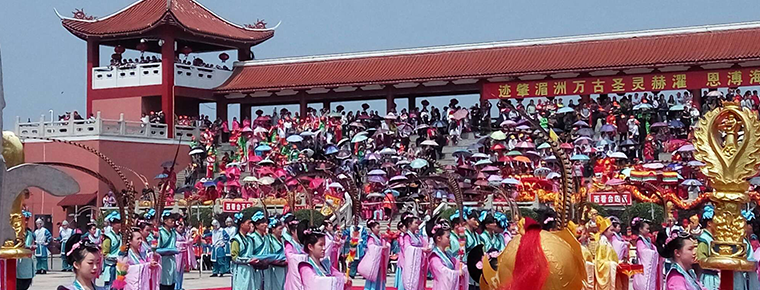
-
Steamed perch with scallion and black beans
Steamed bass cooking techniques are mainly steamed dishes, and their taste is salty and fresh. Steamed perch is one of the famous traditional dishes in Guangdong province.
Views: 176 Time 2018-11-02 -
Gucun Park Shanghai
Gucun Park is located in Gucun Town, Baoshan District, from north to Shapu, south to Jiazaobang, and adjacent to Huanbei Avenue of the Outer Ring Road,.
Views: 91 Time 2018-12-19 -
Jiahe City Hot Spring Valley
Jiahe City Hot Spring Valley is located in Jiahe City, Nanwu Avenue, northeast of Nanning City. It is about 13 kilometers away from Nanning International Convention.
Views: 378 Time 2019-01-21 -
Avanti
Avanti, also translated by the Albanian side, (Uygur "Mr." means, Arabic: Juha or Nazar Ding), is a person active in Islamic nationalities from Morocco in the west to Xinjiang in China..
Views: 140 Time 2019-03-28 -
Dagudarengrab
Dagudalenglei Biao is the only Creation Epic discovered, sorted out and published by the De'ang people up to now. It is more than 1200 lines long. The epic is different from.
Views: 392 Time 2019-04-22 -
Haha Opera
Haha Opera, also known as Liuzi Opera and Drinking Opera, is a local opera originated from the folk in Hebei Province. It is the first national intangible cultural heritage.
Views: 210 Time 2019-05-02 -
Qin an Xiaoqu
Qin'an Xiaoqu, also known as the old tune of Qin'an, is one of the national intangible cultural heritages. It is an ancient traditional folk art variety formed and mainly popular in Qin'an and other c.
Views: 174 Time 2019-06-10 -
Xiabaoping Folk Stories
There are many original ecological works of Xiabaoping folk tales, which have distinct local characteristics and high cultural taste. It is the epitome of the traditional folk literature in the Three .
Views: 343 Time 2019-07-01 -
Double Ninth Festival chong yang jie
The Double Ninth Festival refers to the ninth day of September in the lunar calendar every year. It is a traditional Chinese folk festival. In the Book of Changes, "Nine" is defined as the n.
Views: 188 Time 2019-08-10 -
Folk Stories of Zouma Town
Folk stories of Zouma Town, Jiulongpo District, Chongqing City, are spread in Zouma Town. The exact age of its origin can not be verified. However, the Zouma Town was established in the late Ming and .
Views: 494 Time 2019-08-16 -
Zhang Jia Agui
Ah Kui (September 7, 1717 - October 10, 1797). Zhang Jiashi , word Guang Ting , Number Cloud cliffs Manchuria's blue flag people (after the war in Xinjiang were promoted to Zheng Bai Qi), a Bachelor o.
Views: 192 Time 2019-09-11 -
Sugar Eggs
Laozao is a local snack, belonging to Sichuan cuisine. Laolao, a kind of wine brewing in ancient Chinese, is a Sichuan dialect, that is, boiled eggs with wine brewing. Put the mash in the pot and boil.
Views: 468 Time 2020-03-09
